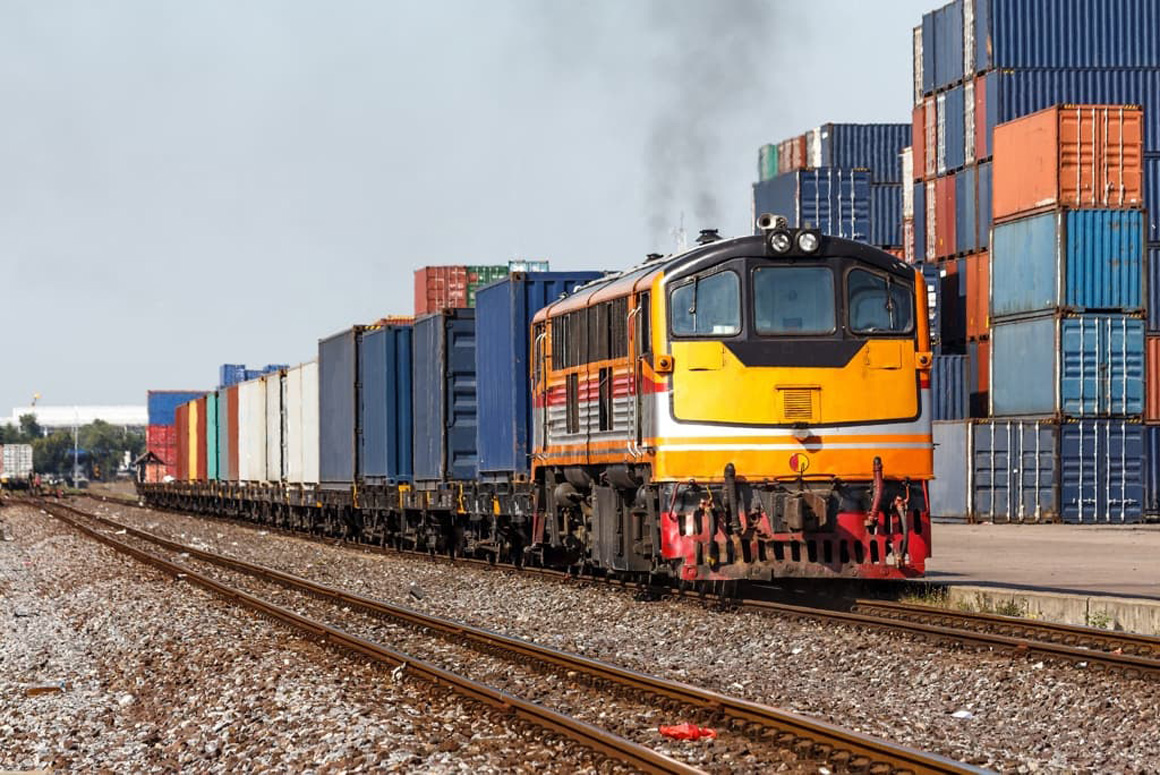F6,Yongde Building, Cuigang, Huaide, Baoan District, Shenzhen, Guangdong, China.
We can ship by Euro-Asia express rail from major rail stations as Guangzhou, Shenzhen, Xiamen, Suzhou, Zhengzhou, Xi-an, Chongqing, Chengdu, etc. to Malaszewicze, Warsaw Poland, Hamburg, Duisburg, Munich, Germany & Liege, Belgium.
What is rail freight transportation?
Rail freight transport is a means of shipping cargo via train. Railway transport encompasses freight service in three general categories: unit trains, carload freight, and intermodal freight.
Many businesses ship their products by rail if they are shipped long distance because it can be cheaper to ship in large quantities by rail than by truck.
Types of cars used in the freight transportation industry:
There are hundreds or even thousands of different types of cargo being shipped every day, and many of those require specialized cars to accommodate them. The most common types of cars which are used in rail freight shipping today are as follows:
BOXCARS (used most often for consumer-packaged goods, auto parts, paper reams, canned goods, bagged products)/li>
HOPPER CARS – can be open-top or covered (designed for loose, unpalletized commodities, such as coal, sand, grain and wheat, corn, sugar, salt, etc.)
FLATCARS (used for carrying unusually large, long, or irregularly shaped cargo, such as oversized machinery or equipment, long poles, pipes, logs, lumber, steel plates, beams, wind turbines, etc.)
TANK CARS (designed for liquid and gas commodities – oil, chemicals, petrol, etc.)
GONDOLA CARS used for higher-density bulk cargo such as scrap metal, steel plates, gravel, etc.)
COIL CARS – used for carrying steel coils, copper coils, and plastic tubing.
REFRIGERATOR CARS car with temperature control, used for carrying frozen meat and fish, fresh produce, milk, beer and what not.
SPECIALITY CARS – special rail car used for large, fragile, or unusually shaped cargo.
The majority of the cargo transported by rail is handled as bulk cargo – transported unpackaged in large quantities.
Railway transport: containers and freight trains
According to ISO regulations, the industry standards are 20 feet and 40 feet container types. To increase the rail transport capacity, sometimes double stack containers are used, this implements carrying two layers of intermodal containers, and is mainly used in the USA.
There are also Piggyback trains, which are referred to where a transportation unit can be carried on the back of something else. For instance, road vehicles such as semi-trailers or truck-trailer combinations can be loaded onto trains with the help of ramps or by crane.
LCL shipping by railway transportation
LCL (less than container load) or groupage shipments can be easily transported by railway. Agora Freight ensures seamless supply chains and offers consolidation service for LCL, which moves regularly to Europe and Russia from China. You can find out more about our consolidation and also warehousing services in China on the dedicated webpage.
When to choose rail transportation?
Railway transportation is a good choice when an accurate delivery time is required, it is a punctual means of transport, and weather conditions are unlikely to block the operation of rail freight shipping. It is estimated twice as quick as ocean freight and 8 times cheaper than air freight.
Railway freight transportation is cost-effective and can be more efficient than other modes of transportation. It has lower fuel costs compared to road transport, especially when shipping a high volume of freight, is suitable for various kinds of goods and is famous for its multimodal shipments. The containers and trailers used are compatible with both road and rail freight, often called multimodal transport, which means that there is no need to unload and reload at transit points; the whole container or trailer is simply lifted and attached from the train to the truck or vice versa.
As for its environmental benefits, using railway transportation helps to reduce exhaust emissions as trains burn less fuel than trucks. A high level of security is another benefit, such as GPS tracking, which is widely used in trains that guarantees the safety of cargo during rail freight trasportation.
